Uncannytober 2022 Illustrations
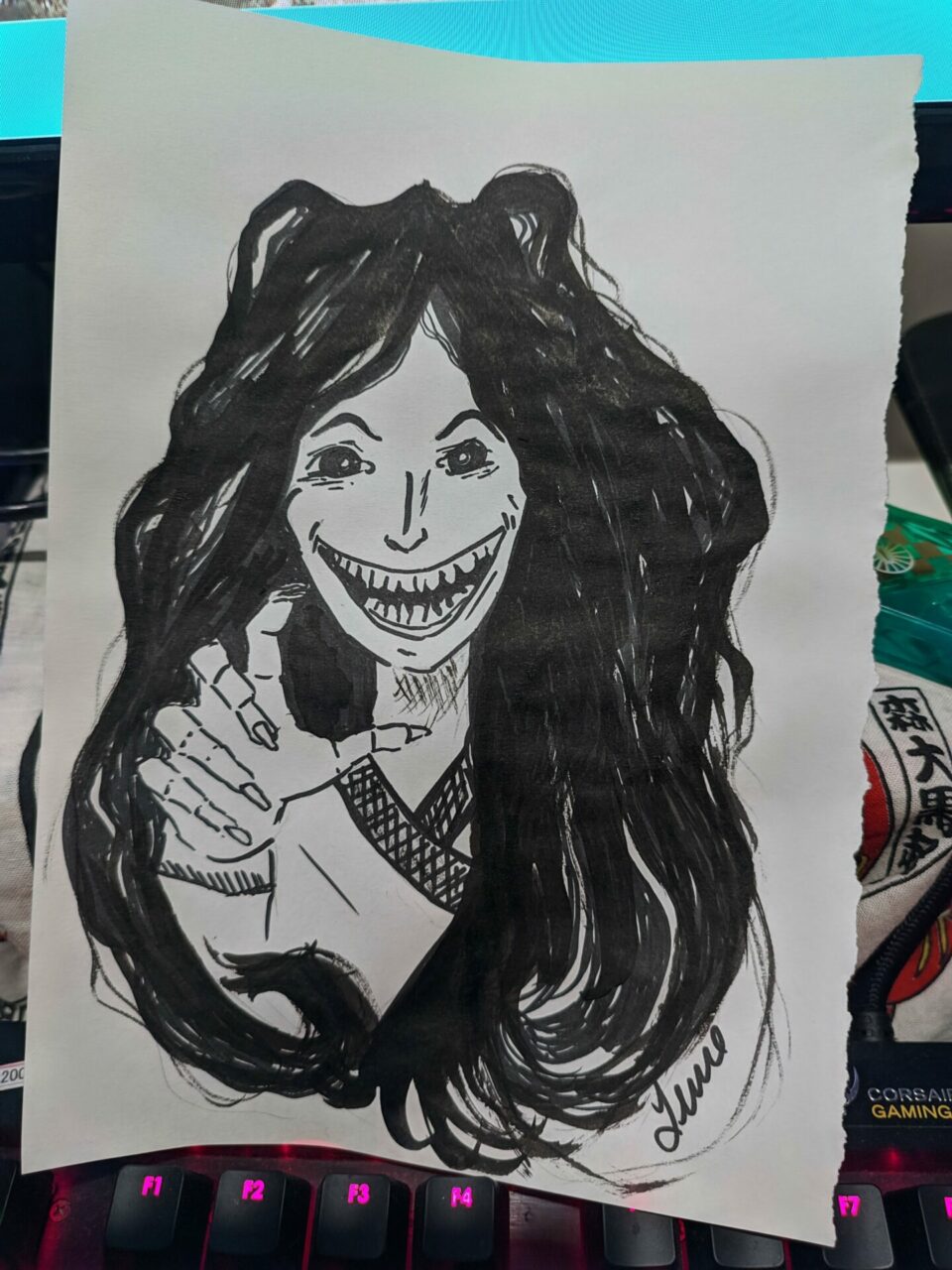
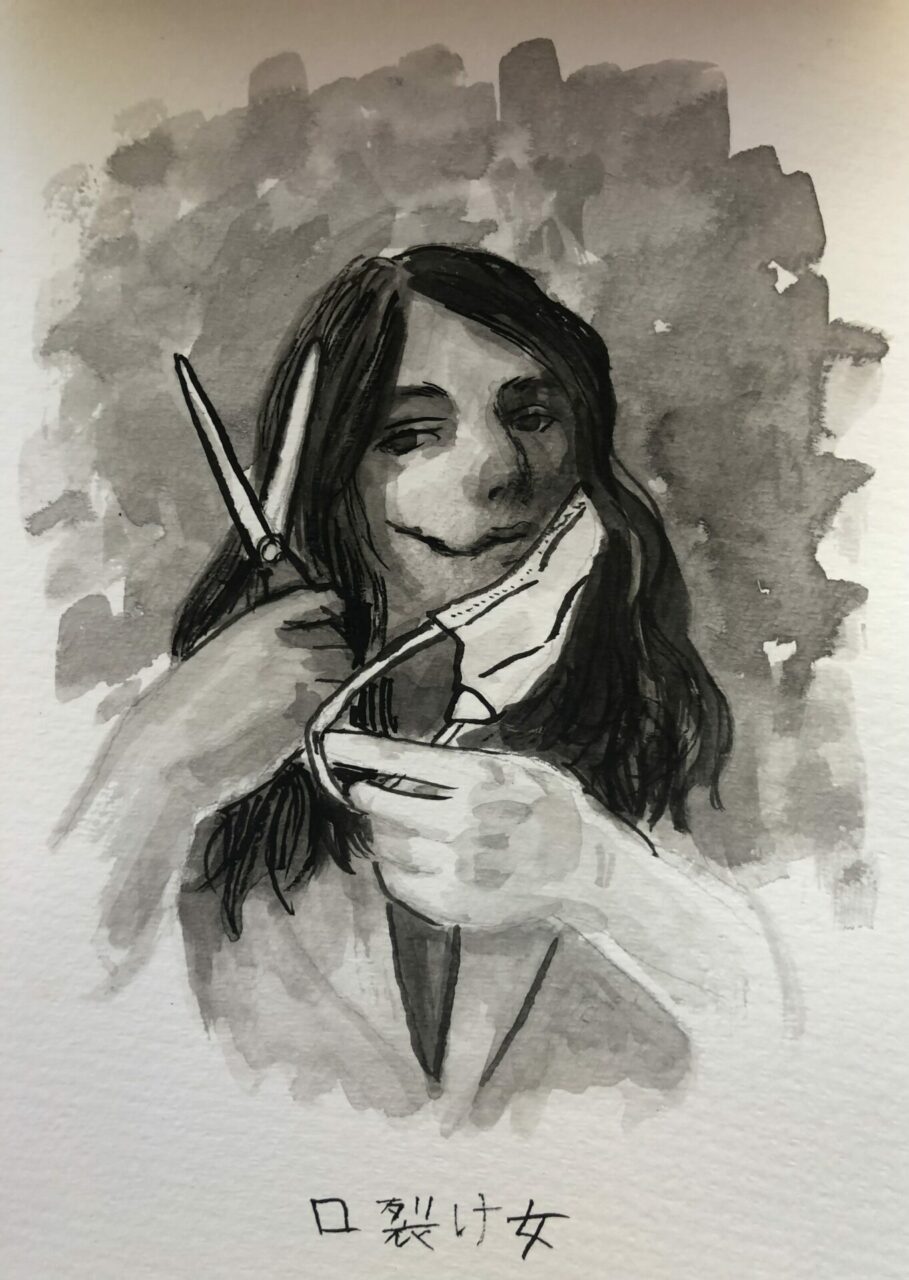
I’ve had quite a few requests via email, DMs, and reviews for a show on Japanese urban legends. Episode #23 is in answer to those requests. Here are two urban myths that have always intrigued me: The Slit-Mouthed Woman (kuchisake onna) and The White Thread That Comes from Your Ear (mimi kara shiroi ito).
Hey hey everyone, this is Terrie in Japan and it’s September. We’ve been having some cool days here and there. Still loads of rain though, and the hot days aren’t completely gone, but I’m really looking forward to fall. Real fall–harvest festivals, eggplants, chestnuts, sweet potatoes, eating mochi cakes under a full moon. At least the crickets have replaced the cicada, so there’s some good news. Now let’s get started on this month’s podcast.
This month is one for the listeners. I’ve had quite a few people reach out via various social media, email, even reviews, and asked me to do an episode on urban legends. I dipped into this once back in episode number 16 with hitori kakurenbo–playing hide and seek by yourself–but there are more, so many more. So today I’m going to introduce you to two that have always intrigued me.
Mimi kara no shiroi ito
The first one I heard about years and years ago while watching a tv show about toshi densetsu. Toshi densetsu is literally urban legends. It’s called mimi kara shiroi ito, or something like the white string that comes from your ear. It’s very simple and weird, and if my take on it is correct, it’s a little bit obvious. Before I tell you about it, keep in mind that getting your ears pierced in Japan is still a bit culturally taboo. It’s better these days but by far the norm. Let me put it this way: I teach elementary, junior high, and high school-aged kids and I can’t think of one of them–male or female–who has their ears pierced, or would even think about it, let alone be allowed to do it. Like I said, it’s not that it’s not done. Maybe it’s more accepted in bigger cities, but compared to, say, North America, it’s not a practice that is in any way cool with parents or teachers.
Another thing to keep in mind is that when you do get your ears pierced, you don’t just go to some shopping mall and stop and get it done on a whim. You have to actually make an appointment with a doctor. I was at a dermatologist once and I saw that he did it, so maybe that’s where you have to go.
Okay, it was a long time ago, but let me describe the scene from the program I watched that portrayed this myth, because I think it sums it up quite nicely.
A young girl decides she wants to get her ears pierced. She doesn’t tell anyone. She secretly saves up money, chooses a date, and then makes an appointment with a doctor. Most of the show is this young teen girl acting all clandestine about getting her ears pierced.
After much drama and tension, she gets them done, and she goes home utterly elated.
The last scene, however, is her in a mostly-darkened room, smiling and admiring her new earrings in the mirror. It’s then that she notices something strange. It looks like a tiny white thread is wrapped around one of the studs. She carefully removes the earring and discovers that the thread is coming from her ear. There’s a lengthy, suspenseful scene showing the horror on her face as she debates what to do.
Finally, she reaches down and grabs a pair of scissors. Slow zoom-in as she moves the open blades to her ear, the string, she gulps, and then, snip!
The moment the string is cut, the scene goes black. The urban myth being that with some people, this mysterious white string appears from the earring hole, and if you pull on it or cut it in any way, you’ll go blind. It was even the rumor going around trying to explain that this white thread was actually an optic nerve coming from your earlobe.
Anyway, I’m not sure if I’m right about this one, but I’m guessing this was a cautionary tale about getting your ears pierced, and maybe not to do it.
Kuchisake-onna
The second urban legend I’m going to talk about today is one that I actually wrote about seven years ago in the horrornews.net site. I’ve always liked this one because my brother-in-law experienced some of the hysteria that occurred firsthand. He was one of the poor elementary-aged kids that believed this urban myth and was affected by it. It’s called Kuchisake-onna.
Kuchi is mouth, sake is from the verb sakeru, meaning to split, tear or rend. Onna is woman. I’ve seen this translated as the slit-mouthed woman, and I think that works pretty fine.
Back in the late 1970s, a rumor spread that a woman wearing a white surgical mask covering her nose and mouth would go up to children walking alone on their way home from school and stop them, asking, “Do you think I’m pretty?” If you answered no, she’d attack you, killing you with her scissors or her knife, depending on the version of the story. If you said yes, she’d pull off the mask revealing a bloody mouth that had been cut from ear to ear. Even now, you get another chance at your answer. Answer no and she pulls out a knife or a large pair of scissors, depending on the story, and cuts you up. Answer yes, and she uses the same weapon to give you a matching mouth.
The thing I like best about this urban myth is the extent and speed with which it spread throughout Japan and really caused havoc. There were reports of parents and teachers having to escort terrified children home, and even police cars ramping up their patrols during after school hours to make the kids feel more secure.
The Origin of the Legend
There are several stories about how the tale originated, one going as far back as 1754, but let’s look at the nationwide panic the story caused back in the late 70s.
The Japanese wikipedia page says that the story first got started back in December of 1978 in Gifu Prefecture. It was in the Gifu Daily newspaper on January 26, 1979, however, that there was something written about Kuchisake-onna. After that–and here is where things take a wrong turn–the story was picked up and it was reported in a journal called the Shukan Asahi, or Weekly Asahi, which, as the name suggests, is a weekly magazine. It’s also not local but national. It’s been around since 1922. It’s a soft news journal, reporting political scandals, interviews and stories about celebrities, recipes, stuff like that.
It was here in the Shukan Asahi that the piece was written about how an old farmer woman in Gifu prefecture went to use her outhouse one day and bumped into the Kuchisake-onna. She was so frightened she fell down. And a little note–the phrase used was koshi wo nukashita, or having all the strength drained from your back. Basically, being so frightened till your knees buckle, and you collapse. I can’t find anything about what actually happened, but this little piece is what started the whole big uproar.
Shortly after that, there was a report of a 25-year-old woman in Himeji City in Hyogo Prefecture who was arrested for dressing up like Kuchisake-onna and wandering around with a knife. After that, the story really took off. There are all sorts of versions of the tale, from a botched plastic surgery, to how less-affluent families started the rumors because of all the well-off kids going to cram schools after regular school. Since they didn’t have the money to afford to send their own children to these cram schools, these jukus, their poorer parents started the Kuchisake-onna story to frighten people–all people–and keep the kids home and off the streets at night.
Another reporter traced the rumor back to Okagishi City in Gifu Prefecture, where he said a woman who resided in a mental hospital would cover her mouth in red lipstick and escape every night to hang out at the entrance of a tunnel and frighten passers-by.
All different and interesting origin stories, but the, “Do you think I’m pretty?” and what happens when you answer are surprisingly the same everywhere.
How to Survive an Encounter with Kuchisake-onna
Now, if you happen to run into such a lady, what do you do? It sounds like answering yes or no to her question is going to end with the same results–you get cut up into big or little pieces, or you get a nice big mouth.
So in no particular order, here I’m going to tell you the quite brilliant recommended methods of escape.
Number one: The slit-mouthed woman loves hard candies, so if you toss some candies her way, she’ll scramble to pick them up, and be so absorbed in sucking them, that you have a chance to run away. In the Kanto region of Japan, it’s said to be the opposite. She hates the candy, and will instead flinch when you throw them at her, thus enabling your escape.
Number two: Show her a block of tofu. Depending on your area, again, she either loves or hates it. Either way, having a block of tofu handy can save your life.
Number three: Say the word “pomade” three times. Some places they say you have to say it six times. This works if you’re dealing with the botched plastic surgery version of the slit-mouthed woman. It’s rumored that the surgeon who messed up her mouth was wearing a lot of pomade on his hair. When you say pomade at her, it triggers the trauma again, and she pulls away, and you have a second to flee. You can also throw some pomade on her if you just happen to have some handy.
Number four: This is maybe my favorite and the least thought-out of all of them. It’s said in Fukuoka the story was that Kuchisake-onna loved to play Space Invaders, so if you chucked a hundred yen coin or two her way, she’d grab it and then she’d hurry off to the nearest arcade to play the game. There is also the advice that yelling “niniku” at her will cause her to run away. Let me translate: niniku is garlic, so you should yell “garlic garlic garlic–niniku, niniku, niniku,” and flee. Or, you can insult her by hurling “hage, hage” her way, and that would be “bald bald” or “baldy baldy.”
Another popular escape was to answer her question, “Do you think I’m pretty?” with, “You’re just average,” or, “You’re just so-so.” Or, you could answer it with, “Do you think I’m pretty?” Either way, it confused the scary lady long enough that you might be able to survive the encounter if you ran really fast.
And finally, if you have the blood type O, you are good, because it seems like she didn’t attack people with O blood types.
A Story From my Brother-in-Law
My brother-in-law Mikito was kind enough to talk to me, ask his childhood friends, and answer all my questions. It seems like pretty much the rumor and the myth here was the same as it was all over Japan, especially with pomade being big.
There was something different though. Here in Yaizu City, Shizuoka Prefecture, the thing that was interesting was yellow. He said that Kuchisake-onna was supposed to hate the color yellow. He was lucky because he had a yellow bag he used to carry to and from school, but what he did was in the morning before he left his house, he’d fill the bag with rocks so he would have like extra weapons against her if she ever showed up.
There was one thing he said that he distinctly remembers, and that was that his mother, my mother-in-law, when she was told about the Kuchisake-onna and his worries and fears, did absolutely nothing to ease his little mind and his little heart. Instead, she just asked if he was an idiot.
So there you have it: two urban myths from Japan. I’m planning on putting another episode out in a couple weeks, and at the end of that one I am going to tack on another bedtime story, another PG-rated one with the audiogram over on YouTube. The R-rated version I’ll put on Patreon. I’m working on it now, and it’s coming along quite well. I’m excited about it. My son will do the background creepy music, and yeah, it should come out soon, so look forward to that.
I will talk to you soon, thank you.
Psst! Hey, do you like scary stories? Or maybe you don’t do full-on horror, but enjoy a nice dark tale–something creepy, involving Japanese folklore and superstition. Well, if that’s the case, you can sneak on over to Amazon or wherever you like to buy books, and look for my two short story collections: A Robe of Feathers and The Carp-Faced Boy. All you need to do is search for Thersa Matsuura. Let me spell that for you; T-h-e-r-s-a M-a-t-s-u-u-r-a.
Another place you can find me doing things is on Patreon. There once a month, for my five dollar and up patrons, I translate, re-tell and record obscure Japanese folk tales. Some are dark, some are humorous, some are just weird.
And lastly, another super-sweet thing you can do is to write a review on iTunes. By doing this, you help like-minded people find Uncanny Japan. It’s a little thing but it means a lot, and it’s a great big help. Thank you, I’m Thersa Matsuura, and I’ll talk to you soon.
Credits
Intro and outro music by Julyan Ray Matsuura

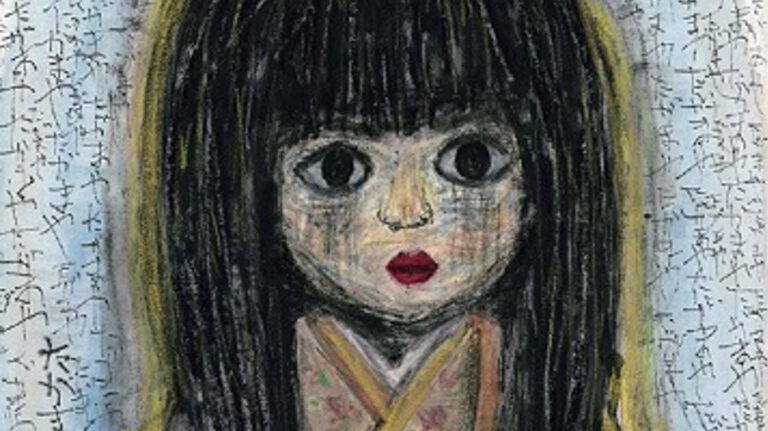
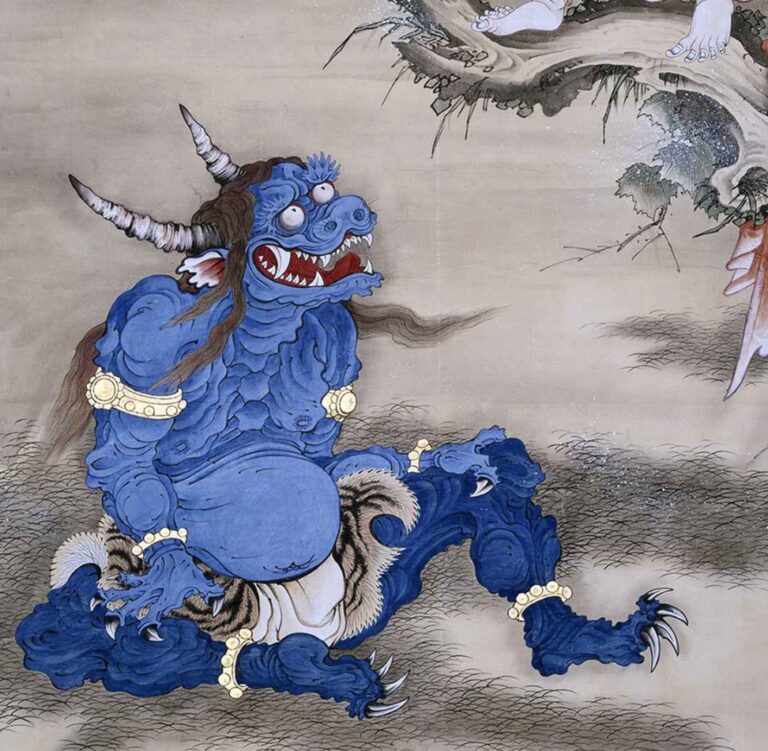
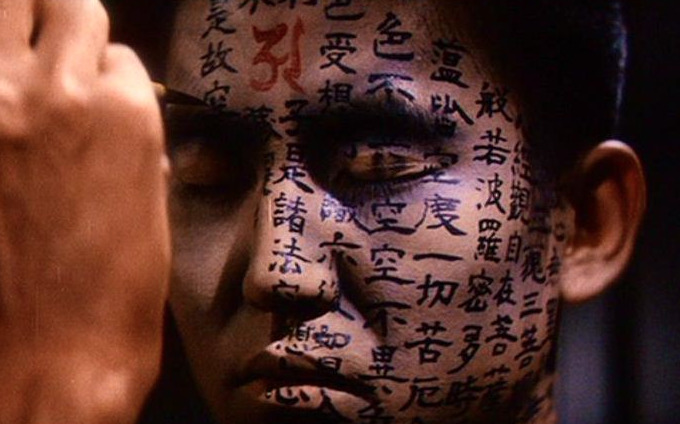
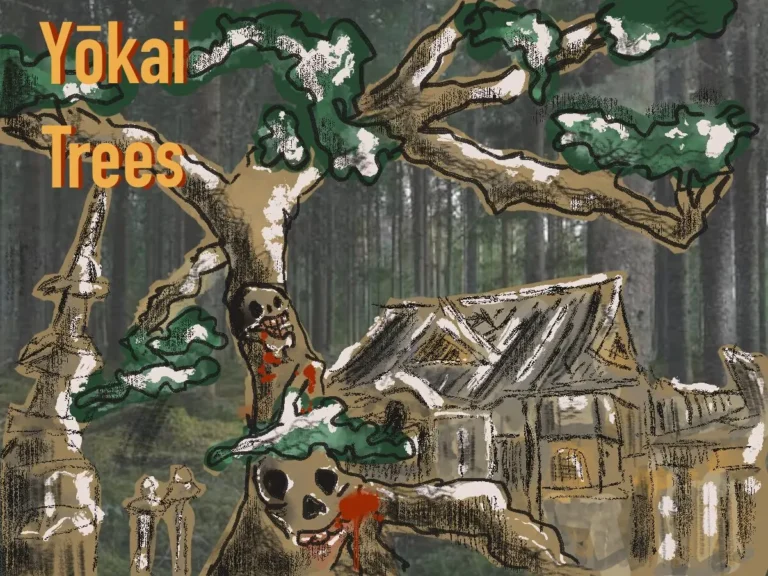


Have come across these podcasts recently – they’re brilliant!
The Kuchisake Onna story reminded me of the “Mary Blood” craze that went around here in England when my kids were small. My then seven year old was so terrified that he more or less glued himself to my side for a couple of weeks. It makes me wonder if there’s something about that age when kids are starting to gain a bit more independence and a bit more awareness of the world outside the family. Is there something about the ambivalence felt as they start to separate from their primary carer – usually a mother – that triggers stories about scary ladies? (Trying to dredge up some knowledge from a children’s literature course I did years ago. I think Bruno Bettelheim write about this). Really interesting. Thank you. BTW I’ve just bought “A Robe of Feathers” as holiday reading!
Joanna, thank you so much for listening and buying “A Robe of Feathers”! Yes, I, too, think there is something about that age. In the States, we called her Bloody Mary and I remember how terrified I was of her. I’ll have to look up Bruno Bettelheim. I’m curious what he has to say about it.